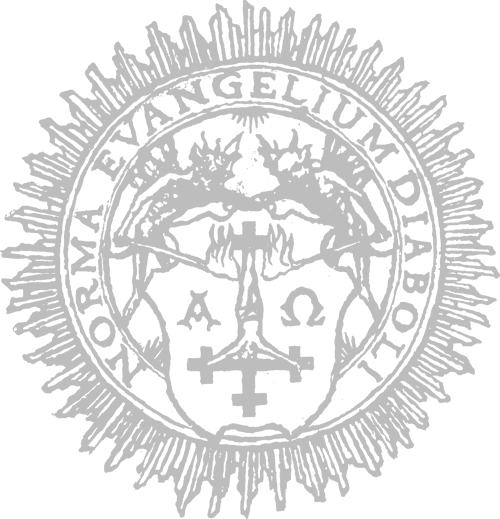ALUK TODOLO
Let’s consider for a minute the hypothesis that materialism—the philosophical belief that all phenomena, including consciousness, can be explained by material interactions and processes—is the sole explanation for the world as we know it.
Could ALUK TODOLO exist in such a reality, considering that you have often described your work as a sort of mediumistic process?
Antoine – Starting from the premise you propose, which I understand as: there wouldn’t even be a philosophical alternative to materialism, well, ALUK TODOLO’s music simply wouldn’t exist. It would have no source, no matrix, no reason to be, and in that context, the means of its manifestation couldn’t even be considered. Our task as musicians is to embody the spirit in matter. If there is no spirit(s), the medium disappears too. In the era of the dematerialization of music, the reverse is also true: if there is no matter, there is no soul either. In what would it incarnate? Our creative process would simply be sterilized. An antenna receives and transmits; if it has nothing to receive or cannot transmit what it has received, it becomes useless. The existence of ALUK TODOLO’s music is therefore proof that materialism is an error. I take this opportunity to remind you that the name ALUK TODOLO means “the ancient beliefs,” predating materialism, mechanism, and scientistic positivism, which I consider to be philosophical aberrations, and which, in my view, have fallen out of favor even among scientists. Without wanting to digress too much, I allow myself to quote Philippe Guillemant, a physicist engineer, who tells us, regarding the void, that it is in reality “an energy made up of potential events, not yet manifested in reality.” He concludes the existence of “an extremely vast field of information corresponding to the quantum void in which consciousness draws to construct our reality. »
Cf : Philippe Guillemant, Jocelin Morisson et Benoit Flamec, « la physique de la conscience », Guy Tredaniel, 2021, pages 33-34.
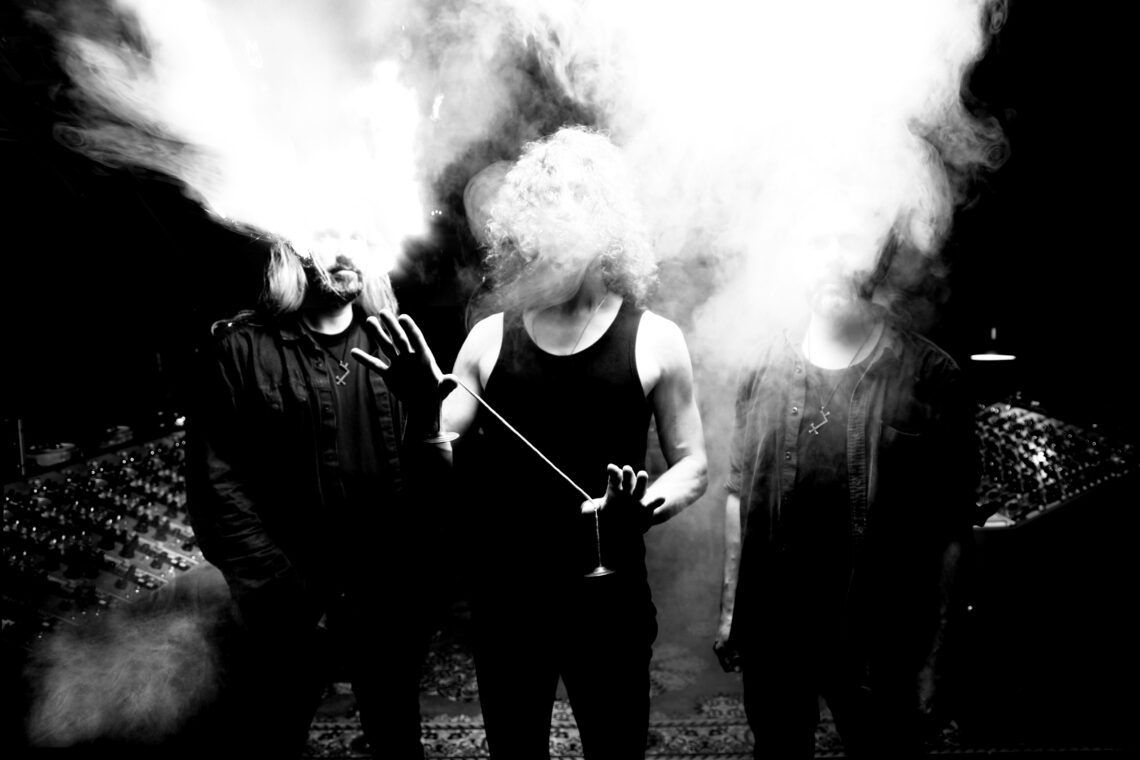
All of us here come from the Black Metal scene; that’s our common background. I assume that every musician undergoes aesthetic shocks without which they would not do what they do or be who they are.
For me, beyond Black Metal, an obvious example would be the discovery of Threnody to the Victims of Hiroshima by Penderecki, which hit me like a thousand suns exploding in my brain.
When it comes to ALUK TODOLO, you once mentioned an album called Outside the Dream Syndicate by Tony Conrad & Faust, from 1972, which definitely makes sense when listening to Finsternis. Arguably, Magma was crucial as well.
Can you name other such pivotal moments, marking a clear before and after in your existence? Could you also venture a guess, because this is what is revealing about these moments, as to why exactly these discoveries were game changers?
Antoine – The discovery of Black Metal was indeed a powerful aesthetic shock, even metaphysical—a primordial revelation. For me, this music gave me the opportunity and the mission to become a musician, not as a pastime or hobby. Much like one becomes a poet or a magician, it was a way to use the time allotted in this incarnation without wasting it, precisely because it is more than just music. Black Metal was a spiritual music, and this spirit was physically embodied in the distortion, the scream, and the abundance of rhythms. As a self-taught musician, Black Metal showed me that technique must exclusively serve the music, that mastering an instrument should only be developed by and through the music one serves, and that the less of oneself one puts into the art, the more meaning the art will have. The other musical shocks that followed were of the same nature. Krautrock, in particular, had the exact same effect on me, as did MAGMA—but we’ll come back to that later. I would also add to this list my encounter with Drew St-Ivany, at the time when he was working on the live album of The Psychic Paramount.
–
I have long been of the opinion that, despite objective musical differences in form, certain musical styles aim at tapping into the same pool of energies.
In a nutshell, Black Metal, Krautrock, Industrial or ambient, the classical avant-gardes, a jazz record like John Coltrane’s Om recorded in 1965… one could argue that they’re worlds apart and sometimes even ideologically opposed, and that is obviously true. Yet they do share a fundamental kinship if you look at them from the right angle.
Antoine – I completely agree with you and believe I’ve already addressed this question, at least in part, earlier on. Krautrock is a very good example that practically speaks for itself in illustrating your point, as it encompasses bands that, stylistically, often—if not always—have nothing in common. Simply listening to these classic and representative albums of the “genre” will prove my point: ASH RA TEMPEL’s first album, Hosanna Mantra by POPOL VUH, Deluxe by HARMONIA, Tago Mago by CAN, or Zeit by TANGERINE DREAM. Viewing music as a spiritual quest is, for me, the only common link between all these bands. It’s what John Coltrane and ILDJARN share. There are other strange connections that I’d like to mention here, at the risk of being somewhat off-topic, such as the similarities between Surf Music and Black Metal: I recommend listening to the track Mar Gaya by THE FENDER IV, which dates back to 1964, and sounds like a DARKTHRONE composition from Transilvanian Hunger. How can this be explained other than by that common reservoir of energy you’ve mentioned?
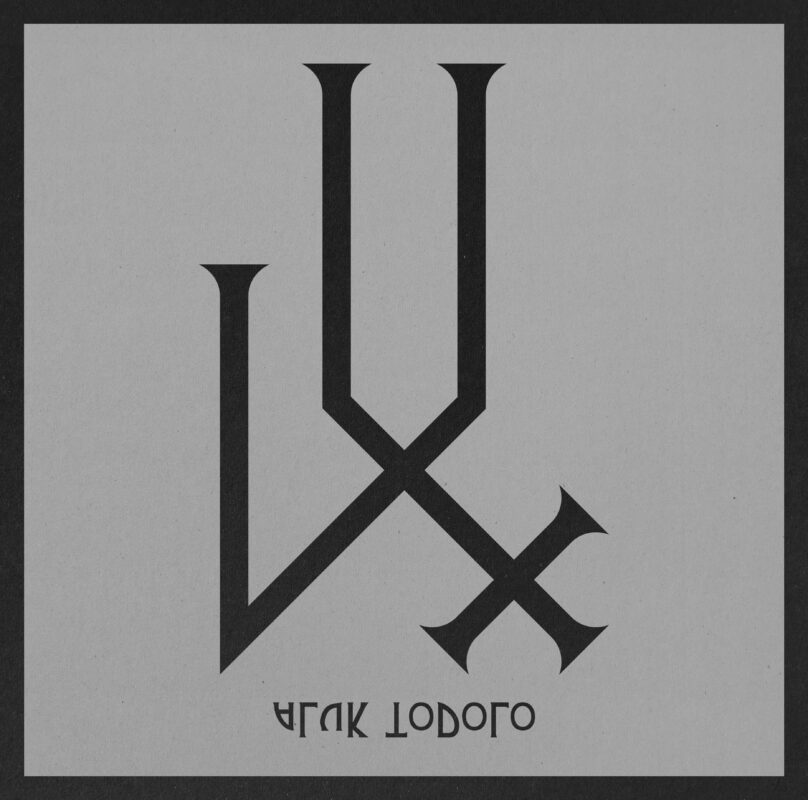
ALUK TODOLO turns twenty years old this year, and you are releasing your fifth full-length LUX, about which we’ll talk in a while.
Before settling down, all three of you traveled the world—for example, to places like Indonesia, and specifically the island of Sulawesi, from where you brought home the name Aluk Todolo.
It seems to me that, during your younger years, you were on a frantic quest for something, and that Aluk Todolo has since been a means to expand that quest through ways other than physical travel. Is this assumption correct?
Antoine – No, I don’t quite agree with that. Regarding the inner journey, I would say that the formation of the band, as an esoteric tool, has allowed us to synergize our individual spiritual quests for the benefit of something greater, or rather, to bring them together and dissolve them in a transcendent way. But ALUK TODOLO has led us to travel physically much more often and much farther than before the band existed. Also, we are not “settled.” Personally, I can’t stand any routine or static state; it plunges me into nervous depression. I seek chaos, disorder, permanent restlessness, and action. I need madness and fury to feel alive; otherwise, I wither. I invoke both external and internal storms, so I can act and create, instead of wilting and stagnating. Our band is 20 years old, it’s young, wild, and doesn’t know what it will do later, but it has already accomplished some work that has made it strong and fearless. ALUK TODOLO is a constant challenge, a perpetual risk. “Im anfang war die tat! Sturm und drang!”
–
A very potent vector to channel emotions is the human voice. ALUK TODOLO, being an instrumental entity, forgoes this. Listening to the song ‘Earth’ by Christian Vander’s project OFFERING, where he performs a stunning moment of vocal madness based on things like onomatopoeia, I was wondering how, if at all, this could be adapted to your musical reality…
Antoine – It so happens that I love that OFFERING track. I remember demanding it insistently during their 2013 concert at Le Triton, and they eventually played it! Christian Vander delivers a demonstration of controlled madness that has very few equivalents. He transitions seamlessly, without us understanding how or when, from a sort of African incantation to something resembling an Adolf Hitler speech, and through many other states as well. What a master! But it’s especially amusing that you mention this particular track in connection to the fact that we gave up on the human voice, because with his voice, Christian is merely invoking John Coltrane and his instrument. To prove this, just look at the way his fingers mimic the movements of a saxophone player on his microphone. There’s a transposition there. For us, the role of the singer on stage is taken by a light bulb. Our song is the Light, quite simply.
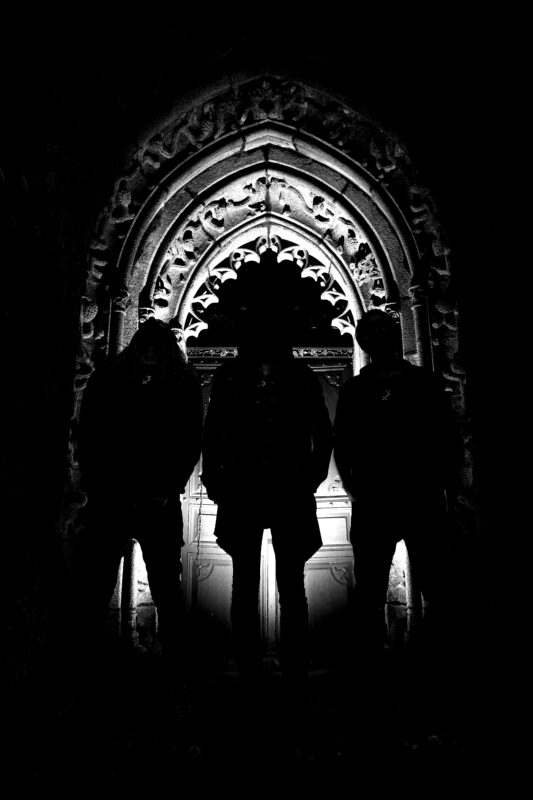
With an album called VOIX, it is blatantly obvious that something is meant to speak to us through what ALUK TODOLO manifests, albeit using different means than human language.
Case in point: another way you described your music is as entheogen, music aiming at channeling something of a spiritual or even divine nature, perhaps tapping into what Kenneth Grant called the Mauve Zone.
What would you advise to someone who currently only hears mere music when listening to ALUK TODOLO, and not the voices whispering beyond the music?
Antoine – To that person, I would advise changing the record, as they would risk, at best, becoming bored, or at worst, giving themselves a terrible headache. The voices singing beyond the music are an integral part of it—failing to hear them means failing to listen to the music. But no one can be forced to appreciate an artistic offering. Even I, a worshiper of MAGMA, took a long time before considering the band, their music, and their universe as anything more than a club for socially awkward role-playing gamers. The key was attending one of their concerts. Seeing the performance made me hear MAGMA in an entirely different way, and I distinctly remember the moment, after returning from that concert, when I listened to the albums I owned by them. The music etched into the grooves was simply no longer the same as before. In light of that, I might ultimately suggest that person come and attend one of our performances, if they insist on continuing.
–
Psychedelics such as mushrooms are a tool many people use to precisely summon or face the entheogen. You have experimented with drugs over the years. Would you care to share some of the more profound experiences, especially if they have relevance within the context of ALUK TODOLO?
Antoine – I don’t find drugs to be all that interesting in themselves. They are merely a tool that allows access to certain states of consciousness. They are also pernicious in many respects, though I certainly can’t help but thank Albert Hofmann for synthesizing lysergic acid diethylamide. But as far as our latest album is concerned, the revelation of LUX came about without any chemical aid, through the simple observation of the magical shimmering on the ocean’s waves and the synchronization of breathing with the movement of the water. In this way, I was able to grasp its vast and deep cycles, its mathematical and sacred nature, and a chant was revealed to me—this chant became the matrix of LUX, containing all the rhythms and notes of the album. It was a sublime and deeply intense moment, truly numinous, evoking the powerful mysterium tremendum described by Rudolf Otto in The Idea of the Holy: “the active power of the divinity, the sense of absolute presence, a divine presence, both mystery and terror.”
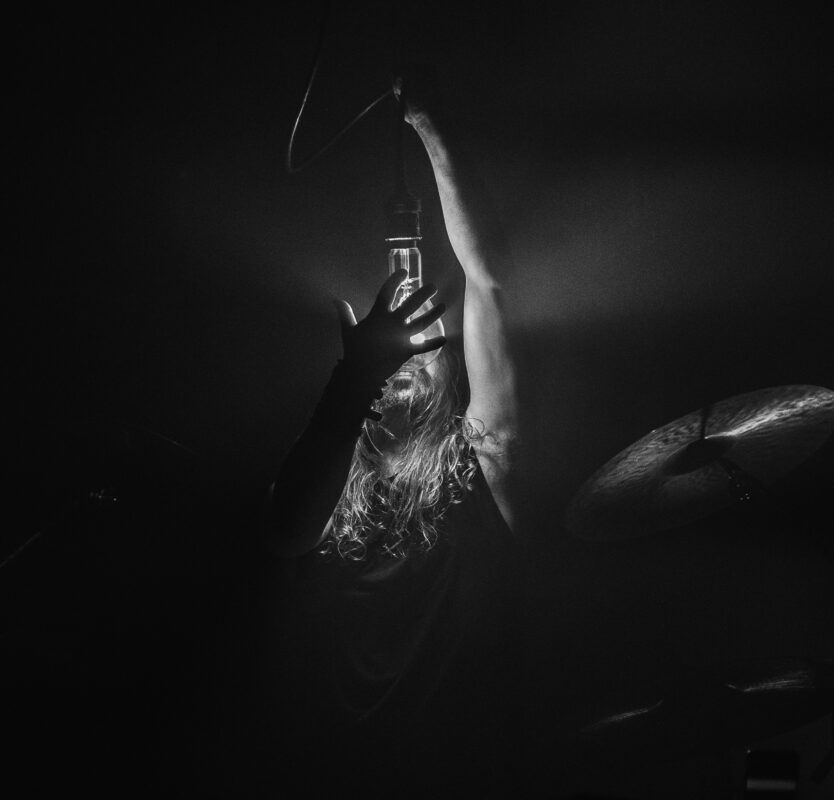
Your audience, when witnessing one of your concerts or listening to one of your records, is left, in the absence of lyrics, without many hints as to how to receive what is unfolding. Ultimately, what they feel or understand will be a mirror of their inner world.
Do you have any intriguing anecdotes to share regarding how people receive your work? Perhaps especially if they experienced something you did not intend at all, yet ultimately recognized as relevant within the context of your work, making the art a two-way street, so to speak. Where something unexpected but nevertheless of value is given back to you.
Antoine – I often say that we offer a sensation, leaving it to the discretion of the listener or viewer to experience the emotions, feelings, and other mental landscapes that may arise from listening to our music. The image of the mirror is pertinent, in my opinion, insofar as it is understood as containing the reflection, in the sense that the reflected objects are indistinguishable from the reflective surface and have no substance of their own. In this way, the use of the mirror as a magical instrument becomes possible. However, the symbolism of reflection is tenaciously associated in the West with the myth of Narcissus, in its modern psychological interpretation, which, to me, is a complete misunderstanding of its original Ovidian source.
I recall, in particular, a New York spectator who approached me after our performance, convinced that ALIUK TODOLO’s music was telling his family story—especially his psychological traumas related to his relationship with his mother. I must admit, this left me feeling more uncomfortable than anything else. On the other hand, more recently, a young woman shared an experience with me that closely resembled the impressions I had felt during the revelation of LUX. She recounted, in vivid detail, a series of remarkably precise visions that corresponded so closely to the original source of the music that it gave me goosebumps.
–
Brittany’s one and only Kerwax Studio is where LUX was recorded. An entirely analog studio, with machines sometimes decades older than us. In more ways than one, it feels like the perfect studio for Aluk Todolo.
When recording at such a place, where only minor technical adjustments are possible compared to the infinite possibilities coming with the era of DAWs, it’s mostly about capturing the perfect performance of a specific song. No cutting and pasting together something. What happens in front of the microphones has to be real.
Antoine – Obviously, analog technology became the only means to achieve our ends. The pursuit of real-time interaction can only be crudely mimicked by digital technology, and in a rather awkward and artificial way. We need chemistry and magnetism. It took us seven years to finalize the composition of Lux, and only a few hours to record it. I don’t think we performed more than two versions of each track. We sought spontaneity and deliberately chose energy over perfection, even if it meant leaving some mistakes uncorrected.
Christophe Chavanon possesses and masters the equipment and working methods that suited us perfectly. There were moments of grace during the Kerwax sessions, such as when we recorded the overdub on the first piece. While this three-note refrain had become both necessary and indispensable, the choice of instrument to play it naturally fell upon the vibraphone used by MAGMA in the ’70s. This studio is also a museum, filled with artifacts from another era, and stocked with treasures by Klaus Blasquiz, the original singer of MAGMA and an indefatigable collector of vintage hi-fi equipment.
I should also mention that Brittany is a magnificent region, exceedingly rich in magic, very inspiring, as if outside of time and the modern world.
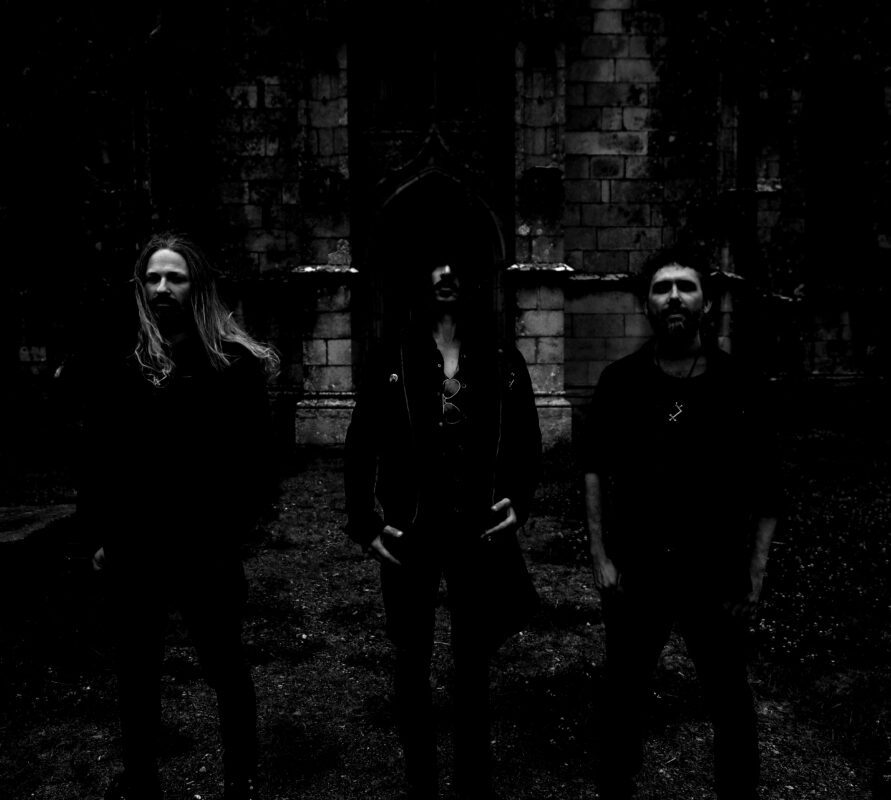
Although lacking lyrics, Aluk Todolo’s albums nevertheless have a strong conceptual backbone.
When it comes to LUX, you shared a preparatory document with me, pictures of a notebook, and I remember reading the following four items scribbled on one of the pages. Can you shed light on why each of them was important when structuring LUX?
Henri Vincenot, Les étoiles de Compostelle
Savitri Devi, The Lightning and the Sun
Aleister Crowley, The Vision and the Voice
The concept of number in space and time, a notion of astronomy taken from the ancient concept of quadrivium.
Antoine – Yes, when we sent you and Tyler (from THE AJNA OFFENSIVE) the demos of Lux, we decided to include a few handwritten notes from a small journal documenting the “conception” process of LUX. The short bibliography you noted is indeed important, though incomplete. It must first be said that we have an obsessive relationship with composition, and during the creative process, various external elements naturally align in synchronicity with our work. Les étoiles de Compostelle by Henri Vincenot, a Burgundian author, deals among other things with architecture and sacred geometry. It contains a wealth of information that was incredibly useful in solving the equation of LUX. One could say it resonated with our work on two levels: not only did the book describe the object of LUX and its form, but also its method of composition, since it was written using the same “mediumistic” process (which is none other than the system described and used by Aleister Crowley in The Vision and the Voice).
In it, we discovered these words in Celtic: “Lavar Ah Sklerijen,” meaning “The Word and the Light”—essentially, “Voice and Lux.” This book curiously became linked to The Lightning and the Sun by Savitri Devi, particularly the section devoted to Akhenaton, through a Burgundian poem, an anonymous 18th-century plowman’s song that is inexplicably cited in a third work: Hymns to the Religion of Aten. Here it is:
V’laî l’soulei qui s’leuve biau,
I’fai raimaiger le’ osiau’;
Tretous ditoînt en leû’ langaige
S’i’ se breuillait, hô ! queû doumaige !
But perhaps the most important text was The Hymns of Abhinavagupta, a Kashmiri poet and master of Shaivism from the 10th century, translated and commented on by Lilian Silburn, particularly The Quest for Ultimate Reality. A phonetic Sanskrit transcription of this text appears in the LUX album sleeve. Here is the first verse translated into English:
“Because He penetrates everything to the highest degree, He whose essence is conscious light does not shine separately from the lights of the sun, the moon, a lamp, etc. This is why the expressions ‘illumination’ and ‘illuminated’ only have relative value.”
–
What underlies Aluk Todolo’s work is almost a reactionary stance. Not in the petty political sense, but in the sense of a rejection of modernity, while upholding some principles that could fall under the loose term ‘tradition.’ This being said, there must be some sort of dialogue between LUX and the world in the year 2024, isn’t there?
Antoine – I believe that precisely because Aluk Todolo’s music would retain the same… nature, regardless of the civilizational context, it is in conflict with the modern world, whose workings and morals are antithetical to the path of the ancestors. Our quest for timelessness is fiercely opposed by the immediacy of the present age, and not the other way around. “Faith is not a conviction we must defend, but a conviction against which we cannot defend ourselves.” — Nicolás Gómez Dávila, The Authentic Reactionary, Éditions du Rocher, 338.
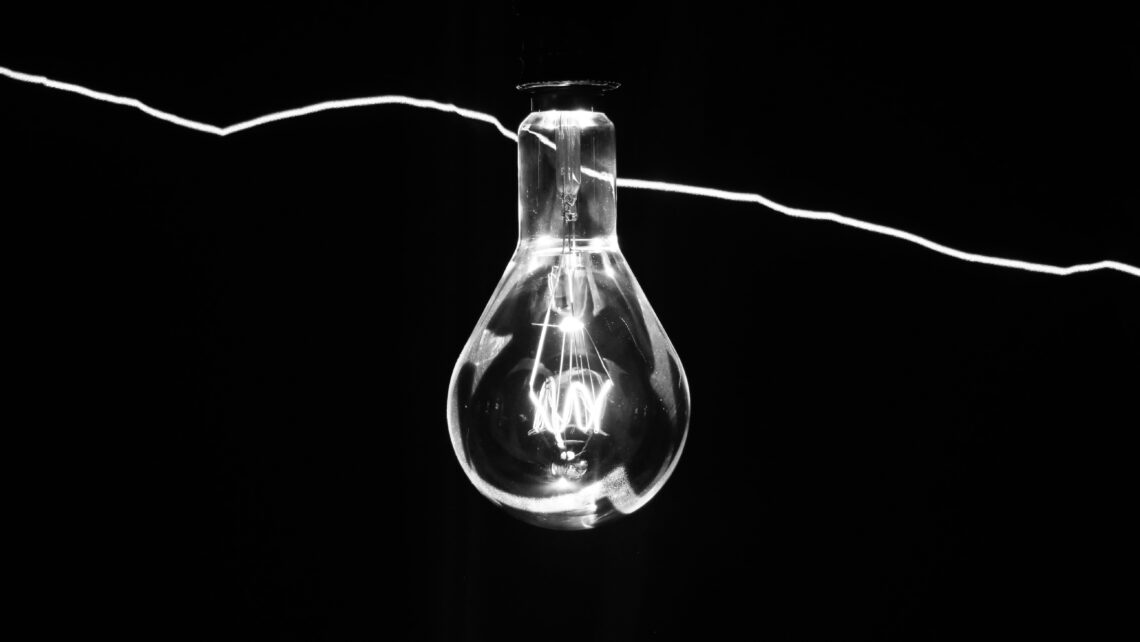
You once stated that your music doesn’t offer war, but love. That it is a repeated quest to try and touch the radiant light within. Could you expand on what you mean by this statement? I’m especially interested in the journey from the intense hatred that is part of Black Metal as we knew it, to this ambition as you describe it.
For context, I’d like to quote Léon Bloy: Il y a une si petite différence entre la lumière du Christ et celle de Lucifer.“
Antoine – For context, and as a response, I would like to quote Jacques Trescases, who in “La symbolique de la mort ou herméneutique de la résurrection” tells us: “Knowledge and Love are one and the same, and the awakening or reawakening of the Superconscious is the only means by which we can access it. The practice of the mysteries, while having the same objective, requires the adepts to personally rediscover and traverse the entire initiatory path, which has the effect, if not the primary goal, of chasing from its depths the SUBCONSCIOUS—symbolically ‘THE DARKNESS’—in order to awaken and bring forth the SUPERCONSCIOUS, symbolically ‘THE LIGHT.'”

French replies were as follows and are made public along the English version by request of the band:
1/
En partant du postulat que tu proposes, que j’entends ainsi : il n’existerait même pas d’alternative philosophique au matérialisme, eh bien la musique d’Aluk Todolo n’existerait tout simplement pas. Elle n’aurait pas de source, de matrice, ni de raison d’être, et dans ce contexte les moyens de sa manifestation ne pourraient même pas être envisagés. Notre tâche en tant que musiciens est d’incarner l’esprit dans la matière. S’il n’y a pas d’esprit(s), le médium disparaît aussi. A l’ère de la dématérialisation de la musique, l’inverse est tout aussi vrai. S’il n’y a plus de matière, il n’y a plus d’âme non plus. En quoi s’incarnerait-elle ? Notre processus créatif serait tout bonnement stérilisé. Une antenne capte et transmet, qu’elle n’ait rien à capter ou ne puisse transmettre ce qu’elle a capté la rend inutile. L’existence de la musique d’Aluk Todolo est donc la preuve que le matérialisme est une erreur. J’en profite pour rappeler que le nom Aluk Todolo signifie « les anciennes croyances », donc antérieures au matérialisme, au mécanisme, au positivisme scientiste qui sont à mon sens des aberrations philosophiques, et qui me semblent être tombés en désuétude même chez les scientifiques. Sans vouloir trop digresser, je me permets de citer Philippe Guillemant, ingénieur physicien qui nous dit, à propos du vide, qu’il est en réalité « une énergie constituée d’évènements potentiels, non encore manifestés dans la réalité. » il en conclut l’existence d’ «un champ d’informations extrêmement vaste correspondant au vide quantique dans lequel la conscience vient puiser pour construire notre réalité ».
Cf : Philippe Guillemant, Jocelin Morisson et Benoit Flamec, « la physique de la conscience », Guy Tredaniel, 2021, pages 33-34
2/
La découverte du Black Metal a effectivement été un puissant choc esthétique, voire métaphysique, une révélation primordiale. En ce qui me concerne cette musique m’a donné la possibilité et la mission de devenir musicien, non pour passer le temps avec un loisir, mais comme l’on devient poète ou magicien, comme un moyen d’utiliser le temps qui nous est imparti dans cette incarnation de manière à ne pas le perdre, justement parce que c’est plus que de la musique. Le Black Metal était une musique spirituelle, et cet esprit se trouvait physiquement incarné dans la distorsion, le Cri, et le foisonnement des rythmes. En tant qu’autodidacte le Black Metal m’a démontré que la technique doit être exclusivement au service de la musique, que la maîtrise d’un instrument ne doit être développée que par et à travers la musique que l’on sert, que le moins l’on met de soi dans son art, plus cet art aura de sens. Les autres chocs musicaux qui ont suivi sont du même ordre. Le Krautrock notamment qui m’a fait l’exact même effet, Magma aussi, mais nous y reviendrons plus tard. A cette liste j’ajouterai aussi la rencontre de Drew St-Ivany, à l’époque où il travaillait sur l’album live de The Psychic Paramount.
3/
Je suis entièrement d’accord avec toi et je pense avoir répondu à cette question, du moins en partie, un peu plus haut.. Le Krautrock est un très bon exemple qui se suffit d’ailleurs pratiquement à lui-même pour illustrer tes propos puisque sous cette dénomination sont regroupés des groupes qui, stylistiquement, n’ont parfois, pour ne pas dire souvent, rien en commun.. Il suffira d’écouter ces albums classiques et représentatifs du « genre » pour avoir la preuve de ce que j’avance : le premier Ash Ra Tempel, Hosanna Mantra de Popol Vuh, Deluxe d’Harmonia, Tago Mago de Can, ou encore Zeit de Tangerine Dream. Envisager la pratique de la musique comme une quête spirituelle est pour moi le seul lien qui existe entre tous ces groupes. C’est ce qu’ont en commun John Coltrane et Ildjarn. Il existe d’autre ponts étranges que j’aimerais évoquer ici, au risque d’être un peu hors sujet, il s’agit des similitudes entre Surf Music et Black Metal : je recommande l’écoute du morceau Mar Gaya par the Fender IV, qui date de 1964, qui ressemble à une composition de Darkthrone sur Transilvanian Hunger. Comment expliquer cela autrement que par ce réservoir d’énergie commun que tu as évoqué ?
4/
Non, je ne suis pas tout à fait d’accord avec ça. En ce qui concerne le voyage intérieur, je dirais que la formation du groupe, comme outil ésotérique, nous a permis de mettre en synergie nos quêtes spirituelles individuelles au profit de quelque chose de plus grand, ou mettons, de les réunir et les dissoudre, de manière transcendante. Mais Aluk Todolo nous a amené à voyager physiquement bien plus souvent et bien plus loin qu’avant que le groupe n’existe. Et puis, nous ne sommes pas “installés”. Personnellement, je ne supporte aucune routine ni aucun état statique, cela me plonge dans la dépression nerveuse. Je recherche le chaos, le désordre, l’intranquillité permanente et l’action. J’ai besoin de folie et de furie, pour me sentir vivre, sans quoi, je dépéris. J’invoque la tempête extérieure et intérieure, pour pouvoir Agir et Créer au lieu de faner et croupir. Notre groupe a 20 ans, il est jeune, fou, et ne sait pas ce qu’il fera plus tard, mais déjà, il a accompli un certain travail, qui l’a rendu fort et intrépide. Aluk Todolo est une mise en danger permanente. “Im anfang war die tat! Sturm und drang! “
5/
Il se trouve que j’adore ce morceau d’Offering, je me souviens l’avoir réclamé à cor et à cris lors du concert de 2013 au Triton, et ils ont fini par le jouer! Christian Vander y fait une démonstration de folie contrôlée qui a très peu d’équivalent. Il passe sans que l’on comprenne comment, ni à quel moment, d’une sorte d’incantation en africain, à ce qui ressemble à un discours d’Adolf Hitler, et par bien d’autres états encore. Quel maître ! Mais c’est surtout amusant que tu cites ce morceau en particulier par rapport au fait que l’on ait renoncé à la voix humaine car Christian avec sa voix ne fait qu’invoquer John Coltrane et son instrument. Pour preuve, la manière dont ses doigts miment les mouvements d’un joueur de saxophone sur son micro. Il y a donc une transposition. Chez nous la place du chanteur est occupée sur scène par une ampoule. Notre chant est la Lumière, tout simplement.
6/
A cette personne je conseillerai de changer de disque, car elle risquerait, au mieux de s’ennuyer, au pire de s’infliger une atroce migraine. Les voix chantant en-delà de la musique en font partie intégrante, ne pas les entendre, c’est ne pas écouter la musique. Mais l’on ne peut forcer personne à apprécier une proposition artistique. Moi-même, qui suis un adorateur de Magma, ai mis très longtemps avant de considérer ce groupe, sa musique et son univers, comme autre chose qu’un club pour handicapés sociaux jeu de rôlistes. La clef fut d’assister à un de leur concerts. De voir le geste m’a fait entendre Magma d’une toute autre oreille et je me souviens clairement du moment où, de retour de ce concert, j’ai écouté les albums que je possédais d’eux. La musique gravée dans le sillon n’était tout simplement plus la même qu’avant. Au vu de cela, je conseillerai peut-être finalement à cette personne de venir assister à l’une de nos représentations, si elle veut insister.
7/
Je ne trouve pas que les drogues soient si intéressantes que ça, pour elles-mêmes. Elles ne sont qu’un outil qui permet d’accéder à certains états de conscience. Elles sont aussi pernicieuses par bien des aspects, même si évidemment je ne peux que remercier Albert Hoffmann d’avoir synthétisé le diéthylamide de l’acide lysergique. Mais pour ce qui concerne notre dernier disque, la révélation de LUX s’est produite sans adjuvant chimique aucun, par la simple observation du miroitement magique sur les vagues de l’océan et la synchronisation de la respiration avec le mouvement de l’eau. Ainsi ai-je pu en appréhender les cycles vastes et profonds, la nature mathématique et sacrée, et un chant scandé m’a été offert, ce chant étant la matrice de LUX et contenant tous les rythmes et notes du disque. C’était un moment sublime et d’une grande intensité, proprement numineux, évoquant le très puissant mysterium tremendum décrit par Rudolf Otto dans « le Sacré ». « la puissance agissante de la divinité, sentiment de présence absolue, une présence divine, à la fois mystère et terreur »
8/
Je répète souvent que nous proposons une sensation, et laissons à la discrétion de l’auditeur/spectateur, les émotions, sentiments et autres paysages mentaux qui pourraient naître en eux à l’écoute de notre musique. L’image du miroir est pertinente d’après moi dans la mesure où l’on appréhende ce dernier comme contenant le reflet, dans le sens où les choses reflétées sont indifférenciées de la surface réfléchissante et qu’elles n’ont pas de substance propre. En cela l’utilisation du miroir comme instrument magique est possible. Mais la symbolique du reflet est associée en occident de manière tenace au mythe de Narcisse, dans sa version psychologique moderne, en contresens total, selon moi, d’avec sa source ovidienne. Je pense en particulier à un spectateur New-yorkais qui m’avait alpagué après notre performance, persuadé que la musique d’Aluk Todolo racontait son histoire familiale, ses traumatismes psychologiques liés à sa relation avec sa mère en particulier, ce qui je dois l’avouer m’avait plus gêné qu’autre chose. En revanche, plus récemment, une jeune fille a vécu une expérience qui se rapprochait énormément des impressions ressenties lors de la révélation de LUX. Elle m’avait narré avec force détails une série de visions étonnamment précises, qui correspondaient avec une pertinence telle à la source originelle de la musique, que j’en avais eu la chair de poule.
9/
Évidemment, la technologie analogique s’est imposée comme le seul moyen pour parvenir à nos fins. La recherche de l’interaction dans l’instant ne peut être que grossièrement singée par le digital, et de façon malaisante et factice. Il nous faut de la chimie et du magnétisme. Nous avons mis 7 ans à finaliser la composition de Lux , et seulement quelques heures à l’enregistrer. Je ne crois pas que l’on ait interprété plus de 2 versions de chaque morceau. Nous désirions cette spontanéité, et nous avons délibérément choisi l’énergie au profit de la perfection, quitte à ne pas corriger certains plantages. Christophe Chavanon possède et maîtrise du matériel, et utilise des méthodes de travail qui nous ont parfaitement convenu. Il y a eu lors de la session au Kerwax des moments de grâce, comme par exemple lors de l’enregistrement de cet overdub, sur la première pièce. Alors que cette ritournelle en trois notes s’était imposée à nous comme nécessaire puis indispensable, le choix de l’instrument pour la jouer s’est dirigé, en toute simplicité, vers le vibraphone utilisé par Magma dans les 70’s. Car ce studio est également un musée, rempli d’artefacts d’un autre temps, et pourvu en merveilles par Klaus Blasquiz, historique premier chanteur de Magma, et collectionneur infatigable de matos hi-fi vintage. Je tiens à dire également que la Bretagne est une contrée magnifique et excessivement chargée en magie, très inspirante, comme hors du temps et du monde modernes.
10/
Oui, lorsque nous vous avons envoyé les démos de Lux, à toi et Tyler (the Ajna offensive) nous avons décidé d’inclure ces quelques notes manuscrites, issues d’un petit carnet de bord du processus de la «conception» de LUX. La petite bibliographie que tu as relevée est effectivement importante, quoi qu’incomplète. Il faut dire tout d’abord que nous avons un rapport obsessionnel a la composition, et que lors du processus créatif, divers éléments extérieurs entrent en synchronicité de manière naturelle avec notre travail. Les étoiles de Compostelle d’Henri Vincenot , auteur bourguignon, traite entre autre d’architecture et de géométrie sacrée. Il contient énormément d’informations qui furent très utiles pour résoudre l’équation de LUX, et l’on peut dire qu’il est entré doublement en résonance avec notre travail , le livre décrivant non seulement l’objet de LUX, et sa forme, mais aussi sa méthode de composition, puisqu’il a été rédigé en utilisant ce même procédé» médiumnique», (qui n’est ni plus ni moins que le système décrit et employé par Aleister Crowley dans» la Vision et la Voix «)Nous y avons découvert ces mots, en celte «Lavar Ah Sklerijen» la Parole et la Lumière, autant dire «Voix et Lux». Ce livre s’est étonnamment retrouvé lié à La Foudre et le Soleil de Savitri Devi, et tout spécialement à la partie dédiée à Akhenaton, par un poème bourguignon, chant anonyme de laboureur du XVIIIE siècle cité sans aucune justification, dans un troisième ouvrage:
«Hymnes à la religion d’Aton». Le voici:
V’laî l’soulei qui s’leuve biau,
I’fai raimaiger le’ osiau’ ;
Tretous ditoînt en leû’ langaige
S’i’ se breuillait, hô ! queû doumaige !
Mais le texte le plus important fut sans doute« les Hymnes de Abhinavagupta», poète cachemirien et maître du shivaïsme du 10e siècle, traduit et commenté par Lilian Silburn, et particulièrement “la quête de la réalité ultime” dont une transcription en sanskrit phonétique se trouve dans la pochette de LUX et dont voici la première strophe traduite en français : «Parce qu’il pénètre toute chose au plus haut degré, Lui dont l’essence est lumière consciente, il ne brille pas séparé des lumières du soleil, de la lune d’une lampe, etc. C’est pourquoi les expressions«illumination» et «illuminé» ne valent que de façon relative.»
11/
Je pense que précisément parce que la musique d’Aluk Todolo aurait la même… nature, quelque soit le contexte civilisationnel, elle entre en conflit avec le monde moderne dont le fonctionnement et la morale sont antithétiques à la voie des ancêtres. Notre recherche d’atemporalité est combattue vivement par l’instantanéité de l’époque, et non l’inverse. « la foi n’est pas une conviction que nous devons défendre, mais une conviction contre laquelle nous n’arrivons pas à nous défendre » Nicolas Gomez Davila « le réactionnaire authentique » éditions du Rocher, 338.
12/
Pour le contexte, et en guise de réponse, je voudrais citer Jacques Trescases, qui dans «La symbolique de la mort ou herméneutique de la résurrection» nous dit: « La Connaissance et l’Amour sont une même chose, et l’éveil ou le réveil du Surconscient est, seul, de nature à nous en ouvrir l’accès. La pratique des mystères, tout en ayant le même objet, oblige les adeptes à redécouvrir et parcourir, personnellement, la totalité de la voie initiatique qui a pour effet, sinon pour but principal, de pourchasser dans ses tréfonds, le SUBCONSCIENT, – symboliquement « LES TÉNÈBRES » -, afin de réveiller et faire émerger le SURCONSCIENT, symboliquement « LA LUMIÈRE »
